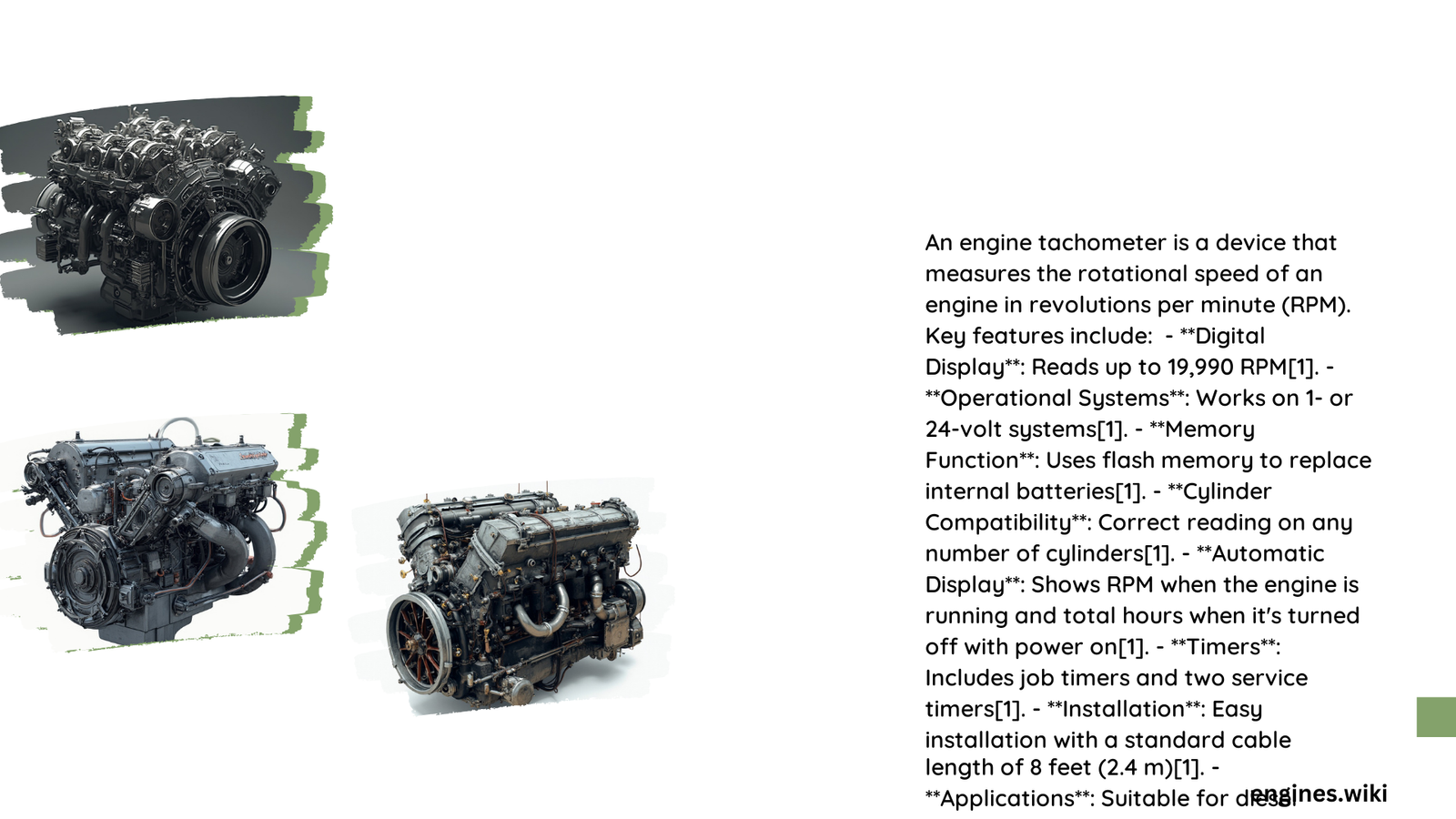An engine tachometer is a critical instrument that measures engine rotational speed in revolutions per minute (RPM), providing crucial real-time data about engine performance, helping drivers and mechanics monitor engine health, detect potential issues, and optimize vehicle operation across various driving conditions and engine types.
What Is an Engine Tachometer?
An engine tachometer is an essential automotive instrument designed to measure and display the rotational speed of an engine’s crankshaft. By providing real-time RPM readings, it helps drivers and mechanics understand engine performance, detect potential mechanical issues, and ensure optimal vehicle operation.
Why Do Vehicles Need Tachometers?
| Purpose | Importance |
|---|---|
| Performance Monitoring | Tracks engine speed and efficiency |
| Shift Timing | Helps manual transmission drivers optimize gear changes |
| Diagnostic Tool | Identifies potential mechanical problems |
| Engine Health Indicator | Reveals unusual engine behavior |
How Does an Engine Tachometer Work?

Engine tachometers operate through sophisticated electronic mechanisms:
- Signal Reception
- Receives electrical pulses from the engine’s ignition system
- Converts pulse frequency into RPM measurements
-
Processes signals from spark plug wires or electronic ignition systems
-
Signal Processing
- Microprocessors calculate rotational speed
- Translates electrical signals into visual display
- Provides real-time, accurate RPM readings
What Are the Types of Engine Tachometers?
Analog Tachometers
- Traditional needle-based display
- Mechanical movement
- Simple, robust design
- Limited additional features
Digital Tachometers
- Electronic LED or LCD display
- Advanced signal processing
- Multiple customization options
- Higher precision measurements
How to Calibrate an Engine Tachometer?
Calibration Requirements
- Reference tachometer
- Multimeter
- Calibration software
- Safety equipment
Calibration Steps
- Prepare necessary tools
- Connect reference tachometer
- Locate calibration adjustment points
- Compare readings
- Make incremental adjustments
- Verify accuracy
What Are Common Tachometer Installation Challenges?
Wiring Complexities
- Matching wire connections
- Ensuring proper grounding
- Compatibility with vehicle’s electrical system
Mounting Considerations
- Dashboard space
- Visibility
- Vibration resistance
- Heat management
Troubleshooting Tachometer Issues
Diagnostic Techniques
- Check electrical connections
- Verify signal transmission
- Test voltage levels
- Compare with reference measurements
Potential Solutions
- Rewire connections
- Replace faulty components
- Recalibrate instrument
- Consult professional mechanic
Best Practices for Tachometer Maintenance
- Regular calibration
- Protect from extreme temperatures
- Avoid moisture exposure
- Use quality electrical connections
- Monitor for consistent performance
Advanced Tachometer Technologies
- Wireless transmission
- Integration with vehicle computer systems
- Enhanced diagnostic capabilities
- Real-time data logging
Conclusion
Understanding engine tachometers involves recognizing their critical role in vehicle performance monitoring, maintenance, and diagnostic processes. By mastering calibration, installation, and troubleshooting techniques, drivers and mechanics can leverage this essential instrument to ensure optimal engine health and performance.
